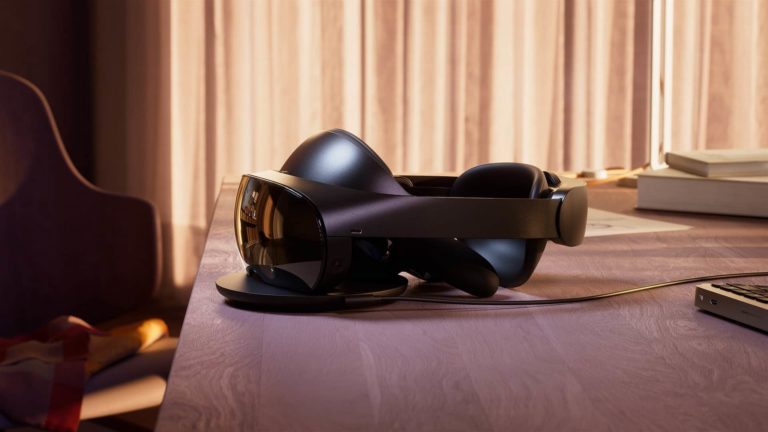
Spatial computing – including AR, VR, and other immersive tech – continues to alter the ways that we work, play, and live. But there have been ups and downs, characteristic of hype cycles. The pendulum has swung towards over-investment, then towards market correction.
That leaves us now in a sort of middle ground of reset expectations and moderate growth. Among XR subsectors, those seeing the most traction include AR brand marketing and consumer VR. Meta continues to advance the latter with massive investments and loss-leader pricing.
Beyond user-facing products, a spatial tech stack lies beneath. This involves a cast of supporting parts. We’re talking processing muscle (Qualcomm), experience creation (Adobe), and developer platforms (Snap). These picks and shovels are the engines of AR and VR growth.
So how is all of this coming together? Where are we in XR’s lifecycle? And where are there gaps in the value chain that signal opportunities? This is the topic of ARtillery Intelligence’s recent report Reality Check: the State of Spatial Computing, which we’ve excerpted below.
Spatial Cousin
This report so far has focused mostly on AR. But what about its spatial cousin, VR? The short version is that it’s a promising technology in entertainment, gaming, and some enterprise functions. But mainstream consumer traction continues to be challenged.
ARtillery Intelligence estimated in its global VR forecast that aggregate VR revenue will grow from $9.04 billion in 2022 to $20.3 billion in 2027, a 17.6 percent compound annual growth rate (CAGR). This consists of consumer ($4.79 billion) and enterprise ($4.25 billion) spending.
Consumer spending is driven by gaming. VR conversely has valuable but relatively-narrow use in enterprise settings due to its sensory immersion that compromises safety, social presence, and ergonomics. Exceptions are immersive training and design collaboration.
In all cases, VR’s biggest accelerant is Meta’s ongoing investments. Its flagship Quest 2 remains competitive at sub-$500 levels. This is a central piece in Meta’s longer-term strategy to reach network effect in VR by gaining early market share through loss-leader pricing.
Magic Number
One of Meta’s top goals is to reach 10 million in-market VR units. This is the magic number where there’s critical mass to attract content developers en masse. The thought is that an eight-figure installed base presents financial incentive for developers to catalyze an ecosystem.
In other words, as those financially motivated developers flock to a given platform like osmosis, it results in greater content libraries that attract more users, which in turn attract more developers. It’s a classic flywheel effect. Or as Mark Zuckerberg has stated:
The big question is what is it going to take for it to be profitable for all developers to build these large efforts for VR? To get to that level, we think that we need about 10 million people on a given platform. That’s the threshold where the number of people using and buying VR content makes it sustainable and profitable for all kinds of developers. And once we get across this threshold, we think that the content and the ecosystem are just going to explode. Importantly, this threshold isn’t 10 million people across all different types of VR. Because if you build a game for Rift, it doesn’t necessarily work on Go or PlayStation VR. So we need 10 million people on [one] platform.
Keep in mind that this defines the installed base of in-market units, which is different than (and builds faster than) period unit sales. Either way, it’s evident that Meta has reached this milestone, with leaked internal documents indicating 20 million Quest headsets sold to date as of March.
The remaining question is if that flywheel effect theorized by Mark Zuckerberg has kicked in. Will adoption and hardware penetration accelerate? So far we’ve seen the opposite effect in depressed Q2 revenue for Quest 2 and Quest Pro, but that could be due to short-term reasons.
The Field
Though all of the above focuses on Meta, as its investments are accelerating and defining the VR landscape, there are other players doing notable things. They include Valve Index in PC VR and PSVR 2 in console-based VR. The latter is an anticipated update from Sony.
Other notable players include Pico, including the recently launched Pico 4 and Pico Pro. Zeroing in on the former, the standalone VR device could challenge Quest 2 with a competitive spec sheet and price tag. However, there are signs that the Pico has faced some market challenges.
Those early challenges aside, Pico is advantaged in that it shares Meta’s ability to lower hardware costs given its deep-pocketed owner, ByteDance. In fact, ByteDance is a social media giant using ad revenue to invest in VR. If this sounds familiar, it’s because it’s Meta’s VR playbook.
What this all means is that a Meta v. Pico rivalry will be one to watch as Pico 4 penetrates the market. However, if Meta has an edge here, it’s two things. The first is its organizational priority and billions in quarterly spending on VR. The second is its head start in the content ecosystem.
Indeed, one of the things that makes or breaks a given VR headset is content availability on a given platform. Meta continues to invest in content by attracting developers through a larger headset base – part of its reason for the loss-leader pricing and flywheel effect examined above.
And Meta continues to directly invest in content by acquiring VR game publishers and studios. That not only fuels content creation through cash infusions but incentivizes content creators to enter the market (and venture funding to fuel them) through validated exit potential.
Put another way, as with most other forms of media and tech, content is king.
We’ll circle back in the next installment with more excerpts from this and other reports. Meanwhile, read the entire report here…






